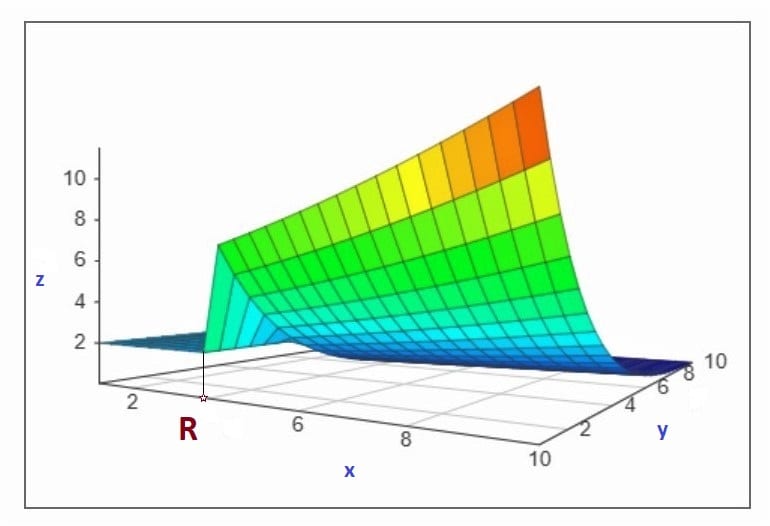EXISTENTIAL RISK ANALYSIS (ERA) – THE BASICS
“The mission of Human spirit is to confront challenges that civilizationally stand orders higher than tribes of Homo sapiens fighting each other.”
Existential risk is any potential change in the physical dimension of Homo sapiens habitat that is capable of rendering her survival as a biological species impossible. With us being representatives of Homo sapiens ourselves, the meaning of Existential Risk Analysis is pointed at designing a strategy for continuous survival.
- The Tribal Thinking
The story of Homo sapiens surviving through the last 300 000 years is a complex multidimensional process where a multiple-agency system interacts with its environment while changing all the time both the environment and its own components.
The basic component is an individual human agency with a brain in charge of decision-making processes. The human brain, defined by Nobel Prize winner Albert Szent-Gyorgyi as “… just another organ of survival, like fangs, or claws” that “does not search for truth, but for advantage, and … tries to make us accept as truth what only self-interest is allowing our thoughts to be dominated by our desires”, plays key role in determining the interplay of both existentialistic and behavioral aspects of our existence.
With our invariable anthropological and biological characteristics, in the whole process of evolution the human species have never had a viable strategy of individual survival: we can’t run fast enough to escape a cheetah, or kill a mammoth for dinner in a one-on-one fight. The reality is that we, Humans, are so far still surviving in the brutal evolutionary adventure, riding on the vehicle of group survival strategy.
Because in the early stages of our Human Civilization humans lived in tribes scattered and migrating around the continents, their group survival strategy naturally emerged in its initial version – the tribal mode, which is being projected onto the spiritual dimension of social realities as Tribal Thinking – a distinctive identity composed of myths, stories, legends, history studies, books, films, media, fake news, etc. The basic function of Tribal Thinking is to integrate the individual self-interests of all its members into a new type of culturally colored entity which has the capacity to motivate their devotion to the collective interest of the tribe to the extent of committing acts of self-sacrifice.
Later on, when transportation and communication tools enabled more intensive contacts, the concept of “tribal” gradually evolved into its contemporary dimensions based not only on ethnicity, but also on religion, nation-state, ideology, corporation, etc. Even if some of these newly emerged entities are nowadays composed of individuals scattered around the world and diffused with members belonging to other entities, they still behave like tribes.
Tribal Thinking has many by-products, and a renowned scholar — Edward O. Wilson, pointed at the two most important game-changing features — supremacy, and dominance: “We’ve become genetically hard-wired to be tribal, to join groups … and, having joined, consider them superior to competing groups… Our groups — tribes, societies, nations — compete with one another for dominance, but as individuals, we also compete for survival and reproduction within groups via individual selection. Selfish individuals might beat altruistic ones, but groups of altruists beat groups of selfish people. The human condition is largely a product of the tension between the two impulses.” At times, hypertrophied sense of supremacy evolved into self-proclaimed exceptionality, and based on inferiority complex ambitions for dominance ignited violent conflicts and wars. Such agendas of individual and tribal agencies became the key factors in generating anthropogenic existential risks.
- The Technology Vector
While staying throughout all of history in our tribal mode of living together, the character of which was so far never affected by any of the numerous political conflicts, revolutions, and wars, we never stopped improving our tools and technologies. It is enough to have a look at our smartphones, spaceships, Ferrari cars, Maglev trains, submarines, thousand meters high buildings piercing the sky, and so on and so far, and to proudly conclude: We have done it! No other biological species for the last four billion years has never changed our planet in the scale and structural depth we have, and has never created anything even close to resembling the scenery of our Anthropocene age.
What stays unnoticed, however, is that as long as we exist in the tribal version of our survival strategy, every new technology that adds new glamour to the objects of our advancing pride, builds up in the semi-dark background the power of self-destruction. Because in the mode of Tribal Thinking every new discovery and every new invention first becomes a weapon, and after that, eventually, becomes a tool for better life. This is how we reached today’s anthropogenic existential risk dimensions, marked by highly sophisticated and extremely powerful weapons: nuclear, chemical, biological, AI managed lethal autonomous weapons systems and others with capabilities to annihilate the whole life on planet Earth.
lll. The Existential Risk Function

Source: Author.
x – overall technological advance
a – multiplication coefficient of military capabilities dependence on technology
b – exponential base for the advance of technology
c – exponential base for the political advance from Tribal to Civilizational thinking
y – degree of civilizational thinking
z – degree of existential risk
The point R on the technology axes marks the creation of nuclear weapons in the middle of 20th century when Homo sapience species for the first time in history faced the existential problem of possible self-destruction.
In the history of human civilization there are colorful examples of cultures within the 0 – R interval of technology advance.
One is the Aboriginal communities in Australia, which have beautiful fine art, amazing legends about the ocean life, the cosmic space and the surrounding flora and fauna, but for more than 60 000 years the aborigines invented nothing more than a boomerang. Or even the renowned Edo period of Japan, where masterpieces of art were created in a hierarchical but stable society, with katana – the famous Japanese sword, being the most dreadful weapon. Both those cultures, having created no technological danger, if not disturbed by other cultures, could continue existing in their mode for many millions of years in the future.
lV. Transition from the current Tribal Structure into Civilizational Thinking
“The saddest aspect of life right now is that science gathers knowledge faster than society gathers wisdom.” I. Asimov.
Because anthropologically the Human condition rests on the findings that “As revealed by latest genetic studies… all humans alive today — from the inhabitants of Tierra del Fuego on the southern tip of the Americas to the Sherpa in the Himalayas and the mountain tribes of Papua New Guinea — came from one common ancestor”, in order to be efficient, the Homo sapiens group survival strategy doesn’t have to be tribal. If Humanity is one single tribe, then the only viable strategy in the current globalized and technologically advanced world is to behave, in its beautiful cultural diversity, as one tribe. With the Human Civilization functioning as the spiritual dimension of a group survival strategy that unleashes the capability of all human beings to mutually defend their immediate and strategic self-interests by generating civilizational values. No matter how complex and controversial the social behavior of humans may be, the rational essence of the existential meaning of human civilization is to uninterruptedly secure the continuity and the comprehensiveness of long-term favorable conditions for each individual human being to thrive.
On one hand, given the history of rigidity in the delusions of violence, conflicts and wars, embedded in most of the currently present tribal cultures, this appears to become a very hard and lengthy transition.
But on the other hand, because both technology and politics are products of the functioning of the Neocortex – a part of the brain, which is in charge of the human survival and which is the most advanced intelligence machine, ever created by Nature, there is nothing more natural than using it for its basic purpose – to invent the viable new behavior that can give us the chance to survive while, at the same time, preserving all the benefits of technological advance: The Civilizational Thinking.
To continue her evolutionary adventure far into the future, Homo sapiens needs to mobilize the potential of human brain to invent new rational behaviors, overcoming the self – destructive obsessions with greed and world dominance that fuel the culture of violence.
Building universal future is really about wisdom, implemented through policies, driven by people aware of their fundamental interests. Including the one that enables all of the rest: Survival.





 The Top Ten Strategic Security Risks Facing Humanity
The Top Ten Strategic Security Risks Facing Humanity